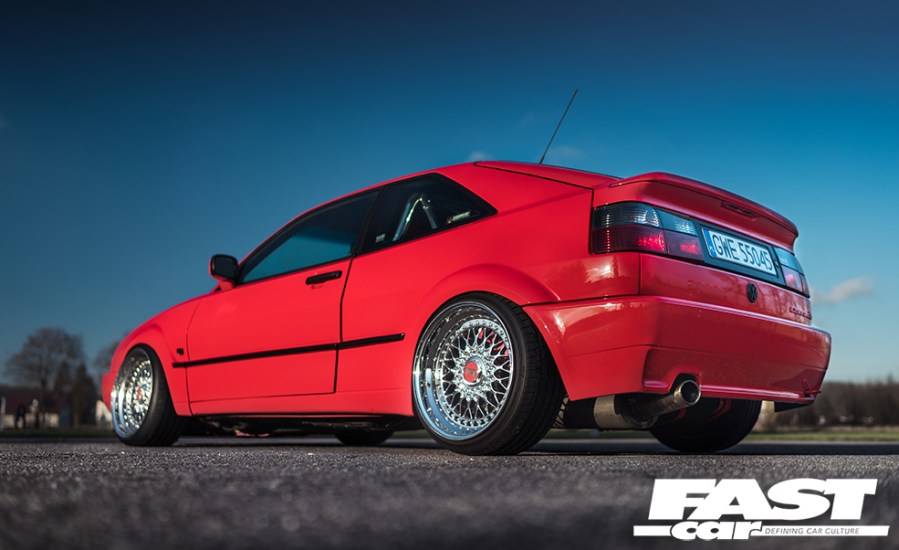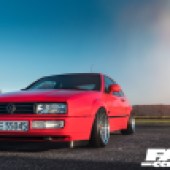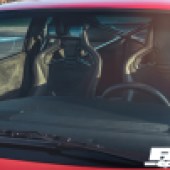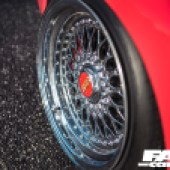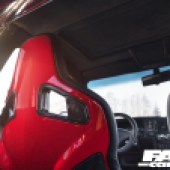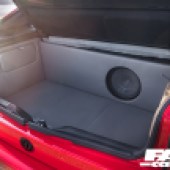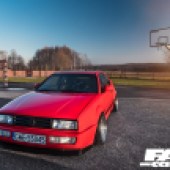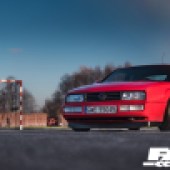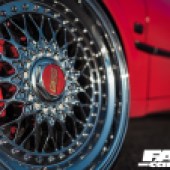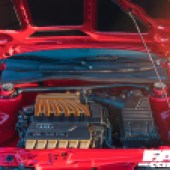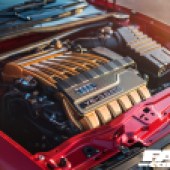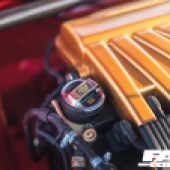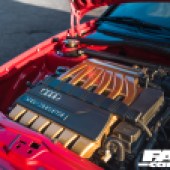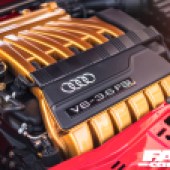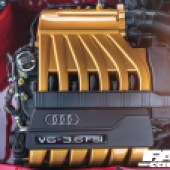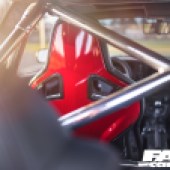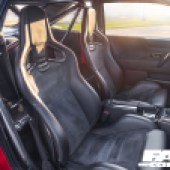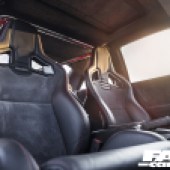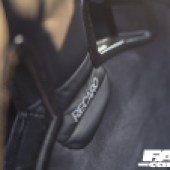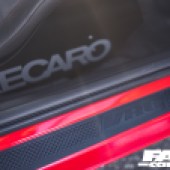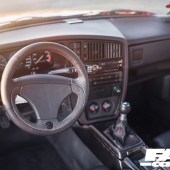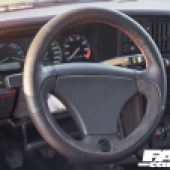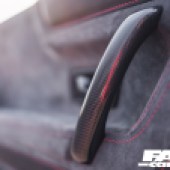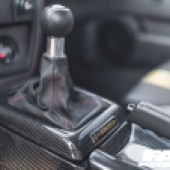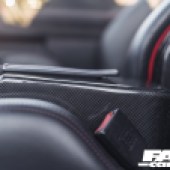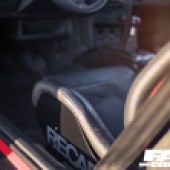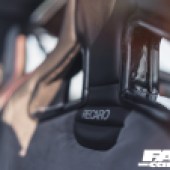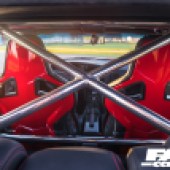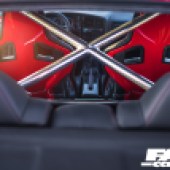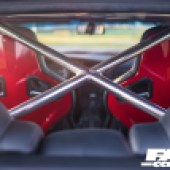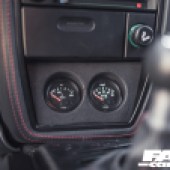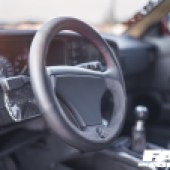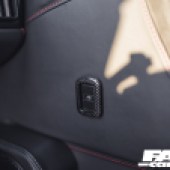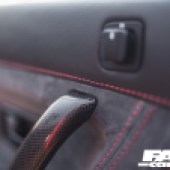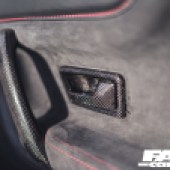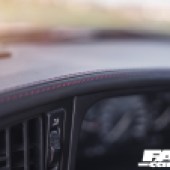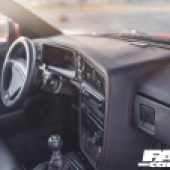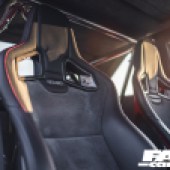The VR6 Corrado was always a psychotic little thing. But when you swap in a new-wave six-shooter, it morphs into an old-school gangster…

This is, by any measure, a lot of engine to shove into a Corrado. Just look at it. Yes, we know that VW bolted a VR6 into the plush Golf-based coupé way back in 1992, but it was never anything like this. This is a whole other level.

Perhaps we’d better rewind a little. Start from the beginning. Then you’ll see why we’re having such difficulty stopping ourselves from tripping over our irretrievably dropped jaws. See, the Corrado has been setting hearts aflame since it emerged from its Golf-shaped chrysalis back in 1988. At launch, this pretty little thing did its level best to upset the sports car applecart by being belligerently chunky, starkly defying the sylph-like styling of the era, the G60 rocking a supercharger where other manufacturers were dabbling with turbos. You got a lot of kit for your outlay too – a devil-may-care attitude to option box-ticking would see you primped to the nines with air-con, electric windows, heated electric mirrors, leather steering wheel, cruise control, trip computer, posh stereo, ABS, sunroof, leather seats, heated washer nozzles… you name it, VW’s luxury sports car offered it.

The engines, however, didn’t light everybody’s pants on fire. Sure, the 136bhp 1.8-litre 16v motor has a lot of fans nowadays, and the supercharged 160bhp G60 was a bit of a fireball in relative terms, but it was a frankly excellent managemental strategy decision in 1992 that elevated the Corrado to the big leagues: the arrival of the VR6 engine. Offered as a full-fat 2.9-litre variant (distinct from the Golf’s, with its 2.8-litre displacement), it served up a meaty 190bhp along with that trademark six-pot thrum.

Now, the Corrado you see here wasn’t intended to enjoy the VR6 motor. It came out of the factory as a G60, and what its Polish owner, Piotr Gradziewicz, has done is to fundamentally change its very nature. The two cars were quite different from the factory – the G60 had Bilsteins while the VR6 had Konis, and the fatter motor meant that the VR6 needed a bonnet bulge, a wider track, a broader front bumper leading to wider wings, and so on and so forth.

But what Piotr did was to take a step back, analyse the nature of his G60 along with VW’s perspective on how the VR6 should operate, and essentially throw all perceived logic in the bin. ‘I can do better than that,’ was the thinking. And you know what? He was right.

“I bought the car back in December 2011,” he explains. “My previous car was a B7 Audi A4, which I liked a lot, but I wanted to have something older, something a bit more retro. I’d always loved the shape of the Corrado, so that’s what I decided to get – and when I bought it, it was a totally stock G60.”

The car was, in fact, one of the very last remaining G60 Corrados in Poland, a model that was never a massive seller there in period and whose numbers have markedly dwindled over the years, either through expensive repairs and maintenance no longer making them economically viable, or simply through people pillaging them for their engines to put into Golfs. It’s for this reason that a lot of Piotr’s domestic peers are a bit annoyed by what he’s done to this Corrado – but you shouldn’t build a car to keep other people sweet, should you? Your ride, your way. Besides, he had logic on his side. While the car had been advertised as being in good overall condition, that proved not to be entirely the case, and as well as various woes caused by failing brakes and electrical gremlins, the G-Lader supercharger blew after six months of ownership, leading Piotr with rather an important decision to make: fix, or upgrade?

The mental cogs had already started to turn from the first day, as the ’Rado had been bought from a collector who’d left it standing and unused for a number of years; while it did manage to complete the 300km journey back to Piotr’s home, the tyres were shot, and the wipers and indicators didn’t work. So this ‘fix or upgrade’ quandary had been buzzing along from the start, and when the blower blew it was simply a case of scaling up the question. “With the supercharger ruined, it wasn’t too crazy an idea to swap a different engine into it,” he reasons. “And to be honest, the VR6 swap was a bit of a coincidence – I’d had no overarching concept for the car from the beginning, and it wasn’t as if I was planning to VR it all along; that said, I’d bought this other engine because it came up at a good price, and it just made sense to fit the VR6 to the Corrado.”

Don’t go thinking that this was an effort to upgrade the stock 160bhp G60 to a stock 190bhp VR6 though. The engine you’re looking at here, as you’ll already have deduced if you’ve read the numbers on it, is no 1990s-spec 12-valve 2.9. The VAG boffins continued to develop this six-shooter over the generations, ultimately arriving at a 24-valve FSI variant with a 3.6-litre displacement. This engine can be found in various levels of tune in the VW Passat R36, Skoda Superb 4×4, VW Phaeton, and Porsche Cayenne.

As you can see from Piotr’s motor, Audi had a crack at it too – his engine is in Q7-spec, meaning 280bhp from the showroom. That’s enough, in standard form, to take the Q7 from 0-62mph in eight seconds… but the Q7 weighs over two tonnes, and has a complex AWD system. The Corrado does not. So it’s not hard to imagine how devastatingly fast this makes the little coupé, especially as the engine’s now running a custom exhaust system and intercooler, taking it to somewhere around 300bhp. That’s a bit brawnier than your average Corrado VR6, isn’t it?

“At that time, there weren’t many R36-swapped Corrados about,” says Piotr. “I decided to really do it properly, to make it look like the engine had been installed from the factory; I wanted to connect the engine with its classic nineties roots.” So the motor was completely cleaned and painted before installation, Piotr mating it to a Mk4 Golf VR6 6-speed manual gearbox (as the Q7 slushbox wouldn’t have been any fun), before continuing the theme throughout the rest of the chassis: every possible element of the underside was sanded and powdercoated, every conceivable bolt and screw galvanised, and every part that was possible to replace with a new-old-stock item was swapped out. Body-wise, the exterior was fastidiously restored to factory freshness before being treated to a bare-metal repaint in the car’s original shade of red.

“The interior is the great work of Sitzcar,” he grins, Sitzcar being the go-to guys for custom high-end retrims in Poland. “I fitted the Recaro CS seats from a Renaultsport Clio, and everything has been trimmed in a mix of Alcantara and Porsche leather – the seats, dash, headlining, doorcards, even the carpets! I made a few upgrades to the audio with Morel Tempo components, although the real soundtrack is that engine. I also fitted a Weichers rollcage, and everything that couldn’t be covered in leather or Alcantara is now carbon fibre, thanks to Carsdream – who also took the stock steering wheel and decreased its diameter.”

The approach is intriguing, at once radically altering the drivetrain with the intention of making it look OEM-ish, while also totally transforming the interior into a mix of premium luxo-swank and balls-to-the-wall road-racer, and it’s this fusion of styles that informs the chassis upgrades too. Because you can’t really throw 300bhp into a stock Corrado and expect it to cope, it’ll get all hissy.

So Piotr’s fitted a set of KW V2 coilovers and Weichers strut braces along with a 4-pot front brake conversion and Mk4 Golf stoppers at the rear, so everything’s up to snuff underneath. And we have to say that he’s played a blinder with the wheels – chrome rims are a stylistic tightrope and can go badly wrong, but when you’re talking about a set of staggered BBS RS with 2.5” lips, you’re right in the sweet spot for retro 1990s modding with a sprinkle of modern flavour.

“The build was carried out over one winter,” says Piotr. “It took around 800 hours all-in, working on it every afternoon and weekend.” And you have to admire that level of commitment. Once the idea to transplant the engine was decided upon, he had a vision in his head, and he tirelessly chased after it to make it real. A full body resto, a custom interior, a mighty modern engine, and all finished to better-than-OEM quality – that’d be impressive if someone took five years over it, but to complete it in a few short months while freezing in the garage and fighting off the Christmas indigestion is little short of heroic. So yes, there’s a whole lot of engine in this Corrado – and there’s also a whole lot of heart.

TECH SPEC VW Corrado VR6
Styling:
Full OEM bare-metal resto and repaint
Tuning:
3.6-litre VR6, custom intercooler, Mocal oil cooler, custom 2.75” exhaust system, 6-speed manual with short-shift
Chassis:
9×17” (front) and 9.5×17” (rear) chromed BBS RS with 2.5” lips, 215/35 Hankook tyres, 5×100 hubs, KW V2 coilovers, Weichers strut braces, 4-pot front calipers with 312mm discs, Mk4 Golf rear calipers with 288mm discs
Interior:
Full retrim in Porsche leather and Alcantara (including dash and carpets), Recaro CS seats (from Renaultsport Clio), Weichers rollcage, plastic trim replaced with carbon fibre, decreased-diameter Corrado steering wheel, Morel Tempo audio
Words Dan Bevis Photos Conek Foto

